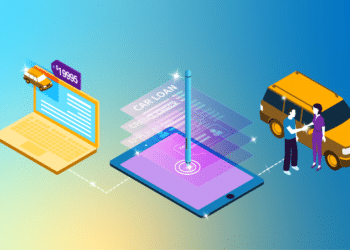Honcker Pushes Out Features as the Company Creates New Revenue Channels
Editor’s note: This interview was originally featured in the June issue of Auto Finance News.
With 2019 on the radar, vehicle leasing app Honcker is evolving its business to include features that engage customers from the moment they start searching for vehicles through the end of their leases, Founder Nathan Hecht told Auto Finance News.

The startup released a local pricing feature in April for customers searching for vehicles and will launch a real-time residual value feature this month that will allow consumers to apply those values to new leases on the app.
Launched in 2016, Brooklyn-based Honcker has secured $26.6 million in funding, according to Crunchbase. Honcker’s current business model relies on a subscription service for dealers and a fee for every car leased through the app, but in the coming months, the company plans to expand into additional revenue streams.
AFN spoke with Hecht about the evolution of the business model, the upcoming launch of its residual value feature, and the challenges of making data relevant to the average consumer. Following are edited excerpts from the interview:
AFN: How will the real-time residual value program work and when will it be released?
NH: What we are referring to is essentially being able to evaluate a used vehicle in real-time so that a consumer can take the value of that vehicle and apply it toward their new lease on the Honcker app. What we’ve realized is that a lot of people who are in the market for a new-car lease have either an existing lease or they have a vehicle that they own. A few months ago, we launched the ability for consumers to get out of that lease up to six months earlier than the terms on the lease. We will take a portion of what is outstanding and roll it into your new lease payments. So that’s what is already live.
What we will be releasing sometime in the middle of June is the second scenario, which is that [someone] owns a car, and instead of going from dealership to dealership and trying to get it sold, they go onto the Honcker app and give the VIN to Honcker and see in real-time the value for that trade-in. Not only will we provide the trade-in value, but we will actually pick up the vehicle from you when we bring your new lease. You can take the value and keep it, or you can apply it to your new lease on the app and, if there’s a difference, we will reimburse the consumer for the difference. To be clear, we are engaging with one or two partners to achieve this real-time valuation, but we are not releasing
yet who [they are].
AFN: What interest do consumers have in real-time residual values? Are there business partners you are trying to appeal to?
NH: Believe it or not, consumers care very much about the residual values of their cars. They care about their lease because many consumers consider buying the lease at the end of the term, and consumers are becoming way more educated and sophisticated as it relates to lease and the construct, or the economics, around the financing of these vehicles. And one of the things we are going to start doing in the next few weeks and months is to educate consumers and give them a lot of information around how leasing works. Like, how does credit relate to leasing? How are residual values calculated? What data goes into that? As to who we are looking to partner with, that’s an interesting question.
In the beginning, it was only dealers; we needed a source of inventory. But now it’s expanded to bank partners, insurance company partners, data partners. We are talking to some of the largest auto lenders in the country, and we’ll shortly be announcing some very interesting partnerships as it relates to that. Auto insurance is a very big topic for us. There’s a lot of behind-the-scenes activity for us right now that is part of our growth for the next year or so.
AFN: Honcker also recently released a feature for consumers and dealers to see local pricing trends. I’m seeing here an evolution outside of Honcker’s core business of providing leases. How do you view Honcker as a business overall, and were these new features planned from the beginning?
NH: When we went live about a year ago, we introduced the very simple and very basic concept of being able to lease a car in a few swipes. But we knew very early on that we wanted to No. 1: address the larger market around car leasing, and No. 2: we wanted to keep consumers in the app throughout the lifetime of the lease. What you’ve seen in the last few months, and what you’ll see in the coming months are that we are addressing the broader market of car leasing and, starting in the beginning of 2019, we are going to be adding further features in the app where we will keep the consumer in the app during the entire lifespan of the lease.
AFN: In terms of consumer awareness, are these features primarily appealing to the data nerds of the world who love looking at these deep dives into the numbers?
NH: I think the challenge for us is to take data that would normally be applicable to data nerds and interesting for data nerds and simplify it or categorize it so that regular people who just want to drive their car can make use of it. We’re taking all of this complex information and filtering it and depicting it in a way that becomes relevant to an ordinary American consumer. That’s the challenge for us. Because you’re right, most people who are not data junkies or necessarily tech- or auto-savvy people are like, ‘Hey, whatever, how much is it?’ But if you can give them ancillary information that’s actually relevant in a way they want it and can comprehend, then it becomes very valuable.
AFN: Is the data you use for residual values and local pricing available to dealers?
NH: That’s something we are releasing in the next couple of weeks, where the Honcker dealer has a dashboard, and that’s where they get all the information about Honcker leases, customer information, and everything they need to complete the transaction. In a few weeks, we are releasing, slowly, data to dealers. For example, the first thing we are starting to offer to dealers is the average price of a vehicle around you. A dealer can go onto the dashboard and we will tell them what the average
price is at competing dealers around them. None of them knows what the other guy is doing. They don’t know where they need to be priced. What they do know is what’s going on in their own store or in their own group. They are lacking a lot of information that is really helpful.















